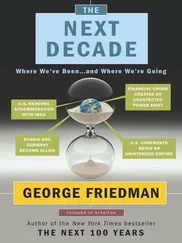The job wasn’t all Paul had hoped it would be, though. He wanted to write human interest stories and found himself frustrated with constant pieces on product comparisons and economic trends. He stuck it out for nearly three years before resigning. Over the next several years he held various positions (salesman, proofreader, typist) and finally found himself, in 1940, as the manager of a large bookstore. He reported to Dr. Terman that, although he had “drifted into” his current line of work, he liked it very much; he envisioned new ways of connecting the bookstore to the larger community, such as by bringing well-known authors to do readings and book signings and by highlighting local writers. But when asked, “Have you definitely chosen your life work?” Paul couldn’t say with any certainty.
In contrast, John, the active and shy scientist, was quite certain he’d picked the right vocation. At the time of the 1940 assessment, John had been out of school for only two years—he had been completing a postdoctoral fellowship in physics and had just recently taken a faculty position at a prestigious California university. His career path showed a high degree of dedication and perseverance, consistent with his having been rated as very conscientious by his teacher in 1922. John was enthusiastic about his job, stating that he had “definitely chosen” his occupation and life work. He described his work as very fulfilling, not only because it suited his temperament but also because it was a way to serve society. Physicists were in great demand as the United States geared up to compete in a world that was rapidly industrializing and heading for war.
Many of the Terman participants were professionals like John—lawyers, engineers, physicians, professors, or teachers. Many others, like Paul, wound up in business—in banking, accounting, advertising, and as managers of all sorts. Still others were spectacularly unsuccessful. Some were chronically unemployed. About a quarter of the men found work in less prestigious jobs—clerical workers, salesmen, craftsmen, and so on. Certainly nothing to be ashamed of, but nowhere near matching the early potential that brought them into the study. Dr. Terman, however, was singularly unimpressed. He even sniffed about a few of these cases of low-status workers by reporting that their leisure time was “devoted to writing of doubtful promise.” 65 65 The Terman quote is from Terman and Oden, Genetic Studies of Genius , vol. 4, The Gifted Child Grows Up , 314 (Stanford University Press, 1997).
Perhaps they believed they were writing the Great American Novel, but Terman was neither pleased nor awed, seeing absolutely no evidence of a rising sun.
Because of the limited career options for the women of this time period, we follow Terman’s lead here and focus primarily on the men. Although about half of the Terman women had jobs outside the home at some point, most senior occupational positions were closed to women, and so their job titles were misleading. We did, however, look at the many individual career paths of the women, and the findings generally were in line with what we saw in the men.
Edward, Paul, John, and all the other Terman men were very different in their career paths and successes. They diverged quite a bit in the demands and stresses their careers entailed. Yes, Edward Dmytryk, the highly successful but highly stressed Hollywood director, lived to age ninety, but many stressed others took ill and died young. Puzzled, we wanted to know if there was a general pattern, and if so, what caused it.
Two questions jumped out at us. First, did the men who worked hard, fought to overcome many obstacles, and achieved high status and demanding positions suffer health problems and early death? And did those men in the less demanding jobs find the paths to long life? Remember that all of the participants were intelligent, promising students at around age eleven, and so probably all had the potential to have a highly successful career.
Second, how did the match between one’s inclinations and one’s career influence later health and longevity? Would those whose jobs fit their personalities live longer? That is, would the artistic child who, yielding to the pressures of his father, became an engineer be frustrated and at an especially high health risk?
Because Terman was especially interested in the future success and leadership contributions of the bright and able children, he spent a lot of time and effort collecting information on their subsequent careers and achievements. Based on their achievements by young adulthood (mostly in their early thirties) Terman and his fellow experts evaluated whether the men had lived up to their high potential. Terman enlisted a longtime vocational counselor to assist him in making these judgments—someone with much practical knowledge of occupational fields. Rather than relying on a single, potentially misleading measure like income, Terman looked at a variety of factors. For example, if you were a businessman, then your income was certainly taken into consideration, but if you were a college professor with a brilliant record but low income, you were still categorized as successful.
Some of the classification was easy. If you were listed in Who’s Who in America , you were put down as highly successful. If you were a prominent doctor or lawyer, you likewise made the cut for the top group. A few Terman subjects were already quite accomplished in art, film, or radio. By the mid 1940s, the Terman participants had published almost one hundred books and hundreds of articles, poems, and short stories.
In the end, about one-fifth of the men were classified as highly successful. Another one-fifth were deemed unsuccessful. The rest were somewhere in between. Not all of the unsuccessful men were in nonprofessional or low-status careers. Some were chemists, teachers, or engineers but not very accomplished at what they did. Others were even lower on the rungs of occupational status. One was a baker, one was a letter carrier, one was a porter, and one was a streetcar conductor. As Terman insisted, none of these men lacked the intelligence to perform a higher-status job.
Is Nuclear Physics Easy and Relaxing?
Norris Bradbury, who has been publicly identified as a Terman participant, became an atomic physicist and played a key role working on the Manhattan Project, the crash program to build the first atom bomb. He succeeded J. Robert Oppenheimer as director of Los Alamos National Laboratory, a job he was very hesitant about taking and yet kept for decades. It is hard to imagine a more high-pressure job than overseeing the development of the nation’s nuclear arsenal at a time of severe Cold War tension and threats. Did it eventually enfeeble Bradbury?
Not at all. In 1970 the Atomic Energy Commission presented Mr. Bradbury its highest honor, the Enrico Fermi Award. He was tremendously successful in his long career. And, despite all the stresses and challenges, Bradbury lived a very long life—to age eighty-eight. He was survived by his wife of sixty-four years (Lois Platt Bradbury), three children, seven grandchildren, and four great-grandchildren. 66 66 The New York Times obituary for Norris Bradbury was published on August 22, 1997.
Although Terman was very pleased with the striking success of many, he warned that future ill health or other misfortune might disrupt the highly promising careers of even his most successful participants. What he did not foresee was that health threats could be predicted by career accomplishments. Or, as was more often the case, by lack of accomplishments.
Studying Success and Longevity
More than a half century after Terman collected his data on occupational success (data collected on about seven hundred men) we looked into the long-term consequences on health and longevity. Would Paul’s easygoing, free-flowing approach to his career as a bookstore manager be a benefit or a curse? Would John’s dedication to physics lead to a stressful but long life like that of fellow physicist Norris Bradbury, or was Bradbury’s long life an anomaly—an exception to the rule?
Читать дальше











